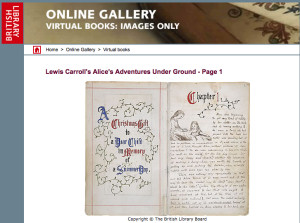Reflecting on one’s actions and transforming from one’s realizations “is what education and learning are about” (Williams, Wooliams, Spiro 121). One transforms into a version of oneself who is better suited to achieve one’s goals. But what are we reflecting on? Are we reflecting on ourselves, or is it possible that we can observe a version of ourselves through the lens of what we “should” become based on American societal values? Can we claim that we are entirely ourselves just because we are not physically the role models our society believes we should become? Continue reading “An Icon of American Character”
Tuesday Theme – Solitude
Today’s theme song for ENGL 203-04 is “Solitude,” composed by Duke Ellington and first performed by him in 1934. The lyrics were written by Eddie DeLange and Irving Mills. Billie Holiday recorded her version in 1952.
Needless to say, the mood of yearning and despair here is quite different from that of the “Solitude” chapter in Walden. “I come and go with a strange liberty in Nature, a part of herself,” writes Thoreau. He seems to revel in his solitude — “I love to be alone,” he tells us — though he can do so in part because he isn’t really alone. He’s inseparable from all that surrounds him. It’s not just that he has “the friendship of the seasons” and human visitors who leave traces of themselves after visiting his house in his absence; he also feels himself to be deeply enmeshed in Nature — “a part of herself.” His liberty when alone is a liberty in Nature, the liberty of one whose identity isn’t defined solely by what lies within. “Am I not partly leaves and vegetable mould myself?”
As a bonus track offered with no pretense of a connection to Thoreau, here are Billie Holiday and Louis Armstrong performing another song to which Eddie DeLange penned the words, the memorable “Do You Know What It Means To Miss New Orleans,” written for the 1947 film New Orleans.
https://youtu.be/Xhkxy3ei8os
More meta moves that matter
Last week in “Fluid Readers, Fluid Texts,” we looked at Graff and Birkenstein’s They Say/I Say: The Moves that Matter in Academic Writing. If’s worth noting that in their effort to offer practical guidance on good academic writing, Graff and Birkenstein quickly and naturally make the shift we’ve described in previous discussions as moving “up one level of abstraction.” There’s simply no way they can argue for the value of their practical advice without getting theoretical, without getting “meta.” They don’t call attention to this move, but it’s there all the same. In the first paragraph of their introduction, they describe writing as a particular kind of activity – an activity, like playing the piano, shooting a basketball, or driving a car – that is learned and that can be broken down into a sequence of “moves.” Not all human activities are of this type.
Behind that first paragraph, then, lies the theoretical question “What is academic writing?” – a question to which the answer is no more obvious than the answer to the question, “What is a text?”
Graff and Birkenstein go further: the move-based activity that writing most closely resembles – perhaps is simply a form of – is conversation. To categorize writing this way is to imply answers to some related theoretical questions: What’s the purpose of academic writing? How, exactly, does it work? By what standards can we distinguish effective from ineffective writing?
We can think of Graff and Birkenstein the theorists as looking for a way to represent the activity of writing, as trying to build a model of it. These are useful words in general for thinking about what the activity of theorizing is. (And to choose them is, of course, to theorize about theory. There’s no end to how meta we can get!)
We spent the last part of class looking at the Lindsay Ellis video on film studies that Taylor posted. We saw that Lindsay Ellis’s argument seems to make many of the “moves” Graff and Birkenstein describe – that her argument fits their model of argumentation quite well. We also saw that to make her argument, she, too had to move up one level of abstraction; she, too, had to theorize. Her main theoretical question – What makes a bit of culture (whether a poem or an action movie) worth examining closely? – is one of the most important ones we can ask as practitioners of criticism.
Alice’s Adventures Underground at the British Library
 The British Library holds the manuscript of Charles Dodgson’s Alice’s Adventures Underground (1864), the forerunner to his Alice’s Adventures in Wonderland, which he published in 1865 under the pseudonym Lewis Carroll. On the library’s website, you can leaf through the 90-page book and view Dodgson’s 37 illustrations. How does the experience of reading the story in this format differ from the experience of reading it in a typeset edition on paper, or as plain or formatted text on a screen?
The British Library holds the manuscript of Charles Dodgson’s Alice’s Adventures Underground (1864), the forerunner to his Alice’s Adventures in Wonderland, which he published in 1865 under the pseudonym Lewis Carroll. On the library’s website, you can leaf through the 90-page book and view Dodgson’s 37 illustrations. How does the experience of reading the story in this format differ from the experience of reading it in a typeset edition on paper, or as plain or formatted text on a screen?
In class, we discussed the 1903 silent film version of Alice. You can find that at the Internet Archive.
